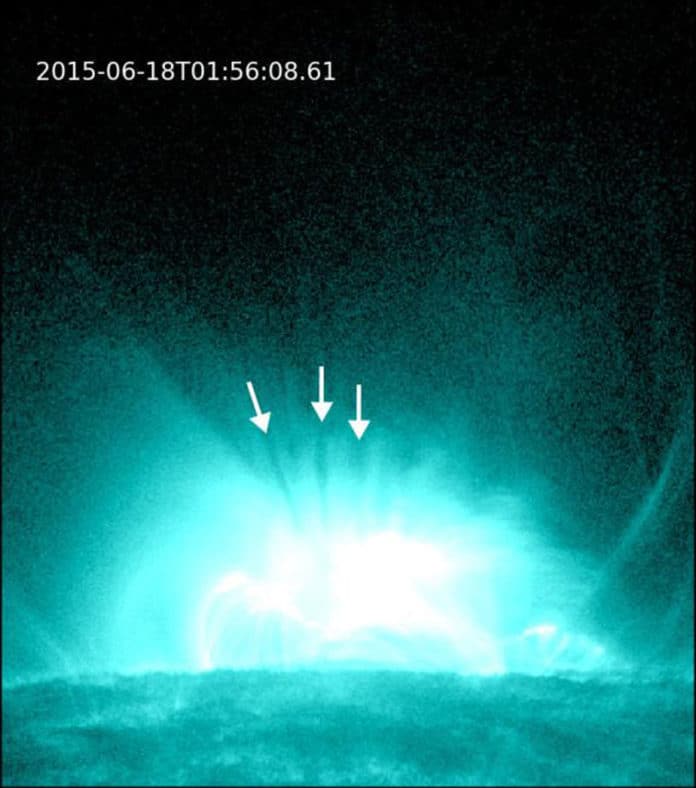In Jan 1999, mysterious motions were observed in a solar flare. This solar flare displayed a downward flow of motion similar to flares that showed bright energy erupting outwards from the Sun.
The motion was like- if the material was falling back towards the Sun. Astronomers describe this as “downward-moving dark voids.”
In a new study, astronomers at the Center for Astrophysics | Harvard & Smithsonian (CfA) offer a new explanation for the poorly understood downflows. They dubbed them as supra-arcade downflows (SADs).
Scientists have assumed that SADs have been tied to magnetic reconnection since their discovery. The process occurs when magnetic fields break, releasing fast-moving and highly energetic radiation and reforming.
Study co-author and CfA astronomer Kathy Reeves said, “On the Sun, what happens is you have a lot of magnetic fields that are pointing in all different directions. Eventually, the magnetic fields are pushed together to the point where they reconfigure and release a lot of energy in the form of a solar flare.”
“It’s like stretching out a rubber band and snipping it in the middle. It’s stressed and stretched thin, so it’s going to snap back.”
Scientists believed that the dark downflows were signs of the broken magnetic fields “snapping back” to the Sun after a solar flare eruption. But there was a catch.
An astronomer at the New Jersey Institute of Technology, Co-author Bin Chen, said, “Most of the downflows observed are puzzlingly slow. Classic reconnection models do not predict this, showing that downflows should be much quicker. It’s a conflict that requires some other explanation.”
To determine, what’s going on, scientists analyzed downflow images captured by the Atmospheric Imaging Assembly (AIA) onboard NASA’s Solar Dynamics Observatory. They then created 3D simulations of solar flares and compared them to the observations.
They found that SADs are not generated by magnetic reconnection after all. Instead, they form independently in the turbulent environment and are the result of two fluids with different densities interacting.
Reeves says, “Scientists are essentially seeing the same thing that happens when water and oil are mixed: the two different fluid densities are unstable and ultimately separate.”
“Those dark, finger-like voids are an absence of plasma. The density is much lower there than the surrounding plasma.”
NASA SDO/Sijie Yu
Scientists are now planning to continue studying SADs and other solar phenomena using 3D simulations to better understand magnetic reconnection. Understanding the process could help develop tools to forecast space weather and mitigate its impacts.
Journal Reference:
- Chennai Shen, The origin of underdense plasma downflows associated with magnetic reconnection in solar flares, Nature Astronomy (2022). DOI: 10.1038/s41550-021-01570-2
